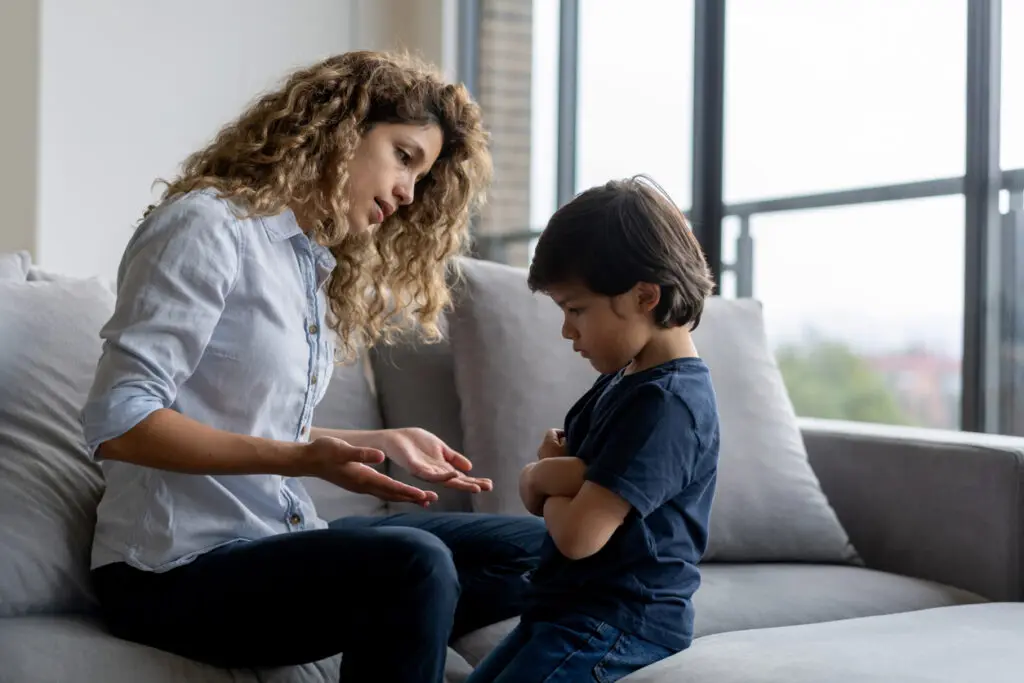Helping Children Manage Anger, Sadness, or Change in Their Life

Supporting children as they handle difficult emotions is a crucial part of helping them grow into resilient and emotionally healthy individuals. Whether they’re dealing with frustrations at school, the loss of a loved one, or a major life change like their parents’ divorce, kids often rely on the guidance of trusted adults to help them deal with strong feelings. Figuring out how to address their emotions constructively empowers children to express themselves, build coping skills, and find a sense of stability in challenging moments. And how parents respond to their children’s emotional reactions plays a key part in helping children of every age learn to manage their feelings in a healthy way.
Infants
Babies’ emotions are largely guided by instinct, as are their reactions to situations. Their chief reaction to any type of stress is crying, but they can figure out self-soothing behaviors on their own, like sucking on their fingers or tilting their head from side to side. Parents can help to calm an agitated infant by rocking them, swaddling them, or singing to them. You can also try singing a song to them, like “Five Little Monkeys” or “The Itsy Bitsy Spider,” which can redirect their attention enough to help them calm down.
- How to Help Your Baby Learn to Self-Soothe
- Six Ways to Help Your Baby Self-Soothe
- Ten Common Baby Self-Soothing Behaviors
- The Five S’s to Calm a Fussy Baby
- Calming a Crying Baby: A Music Therapist’s Method
Toddlers
When a child reaches age 1, they become more aware of their emotions and how they connect to different situations. They also understand that their parents can be a source of comfort to help negative emotions go away. At this stage, parents can teach their children to identify different emotions and begin giving them basic coping strategies. By the time a child is 2, a child should be able to learn to start regulating their emotions by stepping back from distressing situations. Distraction can be a valuable tool for toddlers: You can often stop an emotional outburst by redirecting the child’s attention. Parents should also model healthy ways to handle their own emotions.
- Helping Toddlers Understand Their Emotions
- Emotions and Play in Toddler Development
- Handling Big Emotions
- Toddler Emotions: Ups and Downs and All Arounds
- Social-Emotional Development in 2- and 3-Year-Olds
Childhood
As children reach preschool and school age and mature toward adolescence, they have a wider range of experiences that can cause many different emotions. Major life events, like the start of kindergarten, moving to a new town, or the divorce of a child’s parents, can be particularly overwhelming. Children can feel sadness, anger, confusion, or even guilt as they try to make sense of these changes. Validating these emotions is crucial to helping the child learn to handle and process them. Acknowledging that it’s normal to feel upset about the situation can help them feel understood and supported.
It’s important for children to know that they can safely express their emotions to their parents without judgment or criticism, even when those emotions are intense. Ignoring how they feel or dismissing their feelings can stunt their emotional growth, making it more challenging for them to learn how to manage their emotions.
However, just because a child’s feelings are valid doesn’t mean that the way they express these feelings is acceptable, and it’s important for children to learn that some behaviors in response to strong emotions are not OK. Teaching a child to manage their emotions effectively starts with helping them to recognize what emotion they’re feeling and then identify the cause of that emotion. For instance, if a child is upset about changes following a divorce, helping them pinpoint the specific cause of their frustration, like missing one parent when the other has custody or adjusting to a new schedule, can give them a sense of control. Once they understand how they feel and why, they can learn to choose behaviors that prevent situations that cause bad feelings and find healthy ways to deal with strong emotions when they’re unavoidable.
Parents can model appropriate behavior by expressing and managing their own anger, sadness, or anxiety in healthy ways. They can also help children reflect on their reactions to stressful situations and find better ways to react in the future. Open communication about the emotions surrounding a divorce or any other significant life change can make a big difference in helping a child feel secure and emotionally grounded.
- How Can We Help Kids With Self-Regulation?
- Eight Ways to Help an Emotionally Sensitive Child
- Co-Regulation: Helping Children Navigate Big Emotions
- How Parents Can Help With Childhood Stress
- Tips for Helping Children Cope With Change
Additional Resources for Helping Children Deal With Change and Emotions
- Six Ways to Respond to Your Kids’ Big Feelings
- Helping Children Adjust to Changes in Their Lives
- Adjusting to Two Homes: Helping Your Child Through Your Divorce
- Helping Children of Divorce Understand Their Feelings
- Protecting Your Child’s Emotional Health During a Divorce
- How Mr. Rogers Helped Us With Our Feelings
- Seven Stress-Relief Techniques for Kids
- Compassionate Family Law Attorneys
- Supporting Children Through Times of Grief
- Six Steps to Support Your Child’s Emotional Regulation
- Five Ways to Help Your Child Manage Frustration
- How to Teach Children to Regulate Their Emotions
- 12 Calming Techniques to Teach Your Child
- Relaxation Activities to Do at Home With Kids
- Helping Children With ADHD Learn to Regulate Their Emotions
